1 Organizing Lecture 6 • One of
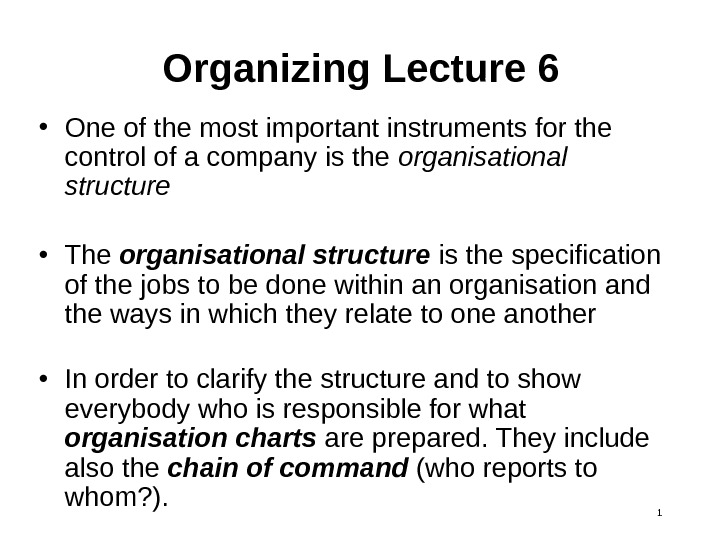
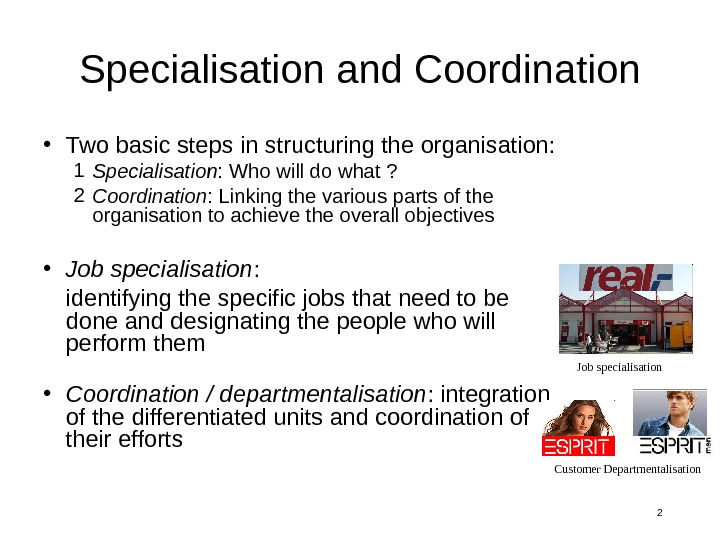
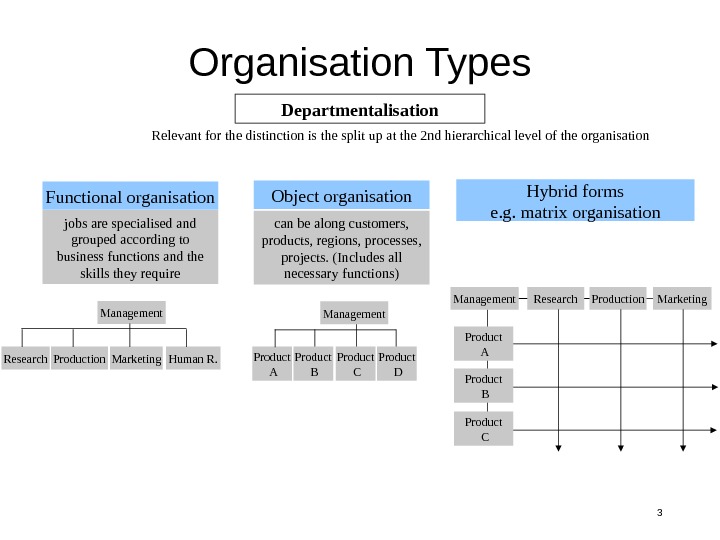
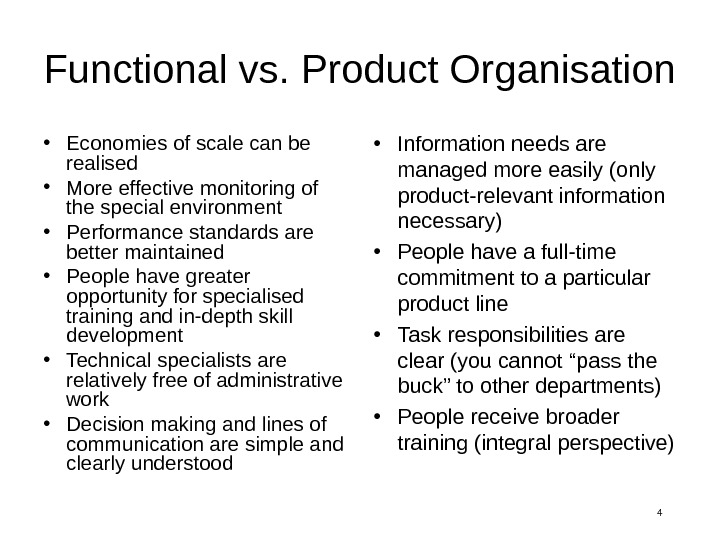
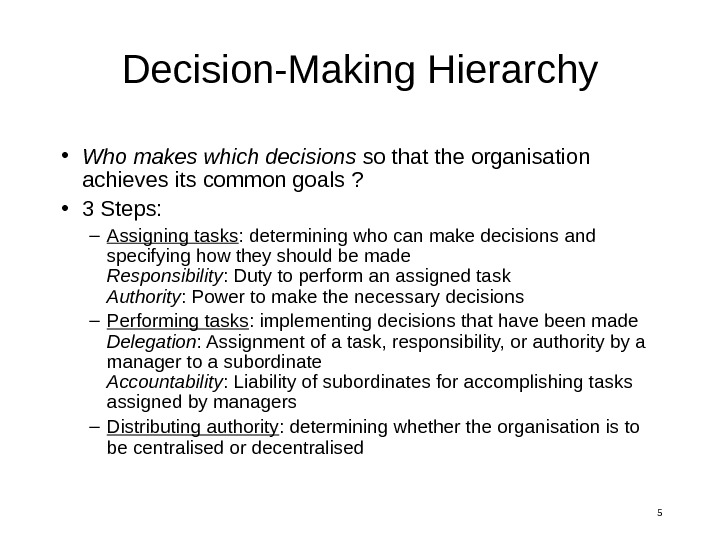
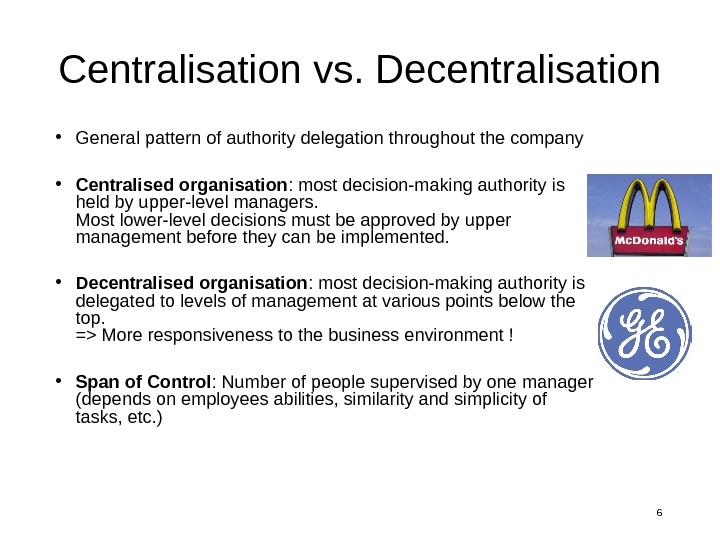
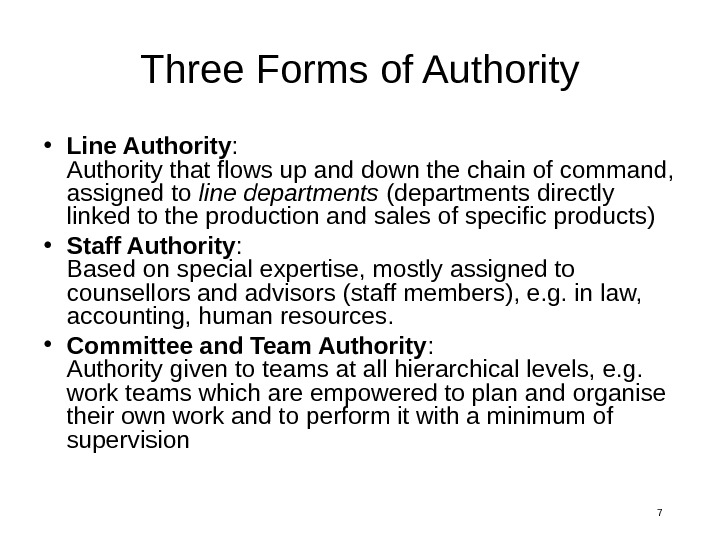
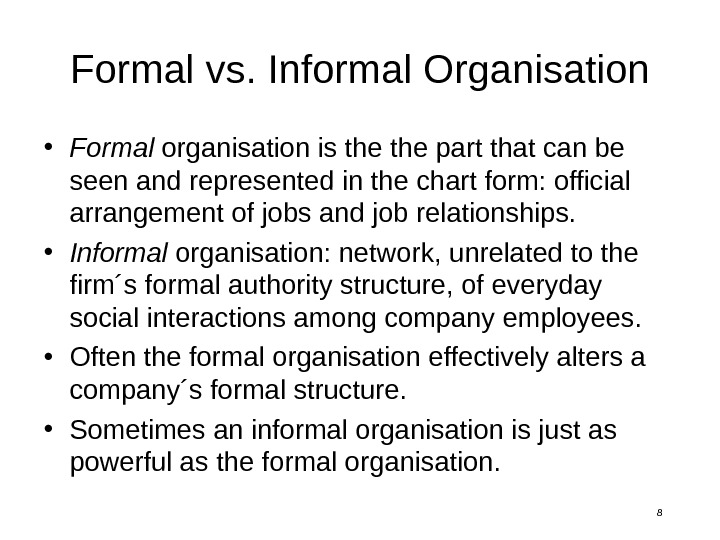
- Размер: 647 Кб
- Количество слайдов: 8
Описание презентации 1 Organizing Lecture 6 • One of по слайдам
 1 Organizing Lecture 6 • One of the most important instruments for the control of a company is the organisational structure • The organisational structure is the specification of the jobs to be done within an organisation and the ways in which they relate to one another • In order to clarify the structure and to show everybody who is responsible for what organisation charts are prepared. They include also the chain of command (who reports to whom? ).
1 Organizing Lecture 6 • One of the most important instruments for the control of a company is the organisational structure • The organisational structure is the specification of the jobs to be done within an organisation and the ways in which they relate to one another • In order to clarify the structure and to show everybody who is responsible for what organisation charts are prepared. They include also the chain of command (who reports to whom? ).
 2 Specialisation and Coordination • Two basic steps in structuring the organisation: 1 Specialisation : Who will do what ? 2 Coordination : Linking the various parts of the organisation to achieve the overall objectives • Job specialisation : identifying the specific jobs that need to be done and designating the people who will perform them • Coordination / departmentalisation : integration of the differentiated units and coordination of their efforts Job specialisation Customer Departmentalisation
2 Specialisation and Coordination • Two basic steps in structuring the organisation: 1 Specialisation : Who will do what ? 2 Coordination : Linking the various parts of the organisation to achieve the overall objectives • Job specialisation : identifying the specific jobs that need to be done and designating the people who will perform them • Coordination / departmentalisation : integration of the differentiated units and coordination of their efforts Job specialisation Customer Departmentalisation
 3 Organisation Types Management Research Production Marketing Human R. Departmentalisation Relevant for the distinction is the split up at the 2 nd hierarchical level of the organisation Functional organisation jobs are specialised and grouped according to business functions and the skills they require Object organisation can be along customers, products, regions, processes, projects. (Includes all necessary functions) Product A Management Product B Product C Product D Hybrid forms e. g. matrix organisation Management Research Production Marketing Product A Product B Product
3 Organisation Types Management Research Production Marketing Human R. Departmentalisation Relevant for the distinction is the split up at the 2 nd hierarchical level of the organisation Functional organisation jobs are specialised and grouped according to business functions and the skills they require Object organisation can be along customers, products, regions, processes, projects. (Includes all necessary functions) Product A Management Product B Product C Product D Hybrid forms e. g. matrix organisation Management Research Production Marketing Product A Product B Product
 4 Functional vs. Product Organisation • Economies of scale can be realised • More effective monitoring of the special environment • Performance standards are better maintained • People have greater opportunity for specialised training and in-depth skill development • Technical specialists are relatively free of administrative work • Decision making and lines of communication are simple and clearly understood • Information needs are managed more easily (only product-relevant information necessary) • People have a full-time commitment to a particular product line • Task responsibilities are clear (you cannot “pass the buck” to other departments) • People receive broader training (integral perspective)
4 Functional vs. Product Organisation • Economies of scale can be realised • More effective monitoring of the special environment • Performance standards are better maintained • People have greater opportunity for specialised training and in-depth skill development • Technical specialists are relatively free of administrative work • Decision making and lines of communication are simple and clearly understood • Information needs are managed more easily (only product-relevant information necessary) • People have a full-time commitment to a particular product line • Task responsibilities are clear (you cannot “pass the buck” to other departments) • People receive broader training (integral perspective)
 5 Decision-Making Hierarchy • Who makes which decisions so that the organisation achieves its common goals ? • 3 Steps: – Assigning tasks : determining who can make decisions and specifying how they should be made Responsibility : Duty to perform an assigned task Authority : Power to make the necessary decisions – Performing tasks : implementing decisions that have been made Delegation : Assignment of a task, responsibility, or authority by a manager to a subordinate Accountability : Liability of subordinates for accomplishing tasks assigned by managers – Distributing authority : determining whether the organisation is to be centralised or decentralised
5 Decision-Making Hierarchy • Who makes which decisions so that the organisation achieves its common goals ? • 3 Steps: – Assigning tasks : determining who can make decisions and specifying how they should be made Responsibility : Duty to perform an assigned task Authority : Power to make the necessary decisions – Performing tasks : implementing decisions that have been made Delegation : Assignment of a task, responsibility, or authority by a manager to a subordinate Accountability : Liability of subordinates for accomplishing tasks assigned by managers – Distributing authority : determining whether the organisation is to be centralised or decentralised
 6 Centralisation vs. Decentralisation • General pattern of authority delegation throughout the company • Centralised organisation : most decision-making authority is held by upper-level managers. Most lower-level decisions must be approved by upper management before they can be implemented. • Decentralised organisation : most decision-making authority is delegated to levels of management at various points below the top. => More responsiveness to the business environment ! • Span of Control : Number of people supervised by one manager (depends on employees abilities, similarity and simplicity of tasks, etc. )
6 Centralisation vs. Decentralisation • General pattern of authority delegation throughout the company • Centralised organisation : most decision-making authority is held by upper-level managers. Most lower-level decisions must be approved by upper management before they can be implemented. • Decentralised organisation : most decision-making authority is delegated to levels of management at various points below the top. => More responsiveness to the business environment ! • Span of Control : Number of people supervised by one manager (depends on employees abilities, similarity and simplicity of tasks, etc. )
 7 Three Forms of Authority • Line Authority : Authority that flows up and down the chain of command, assigned to line departments (departments directly linked to the production and sales of specific products) • Staff Authority : Based on special expertise, mostly assigned to counsellors and advisors (staff members), e. g. in law, accounting, human resources. • Committee and Team Authority : Authority given to teams at all hierarchical levels, e. g. work teams which are empowered to plan and organise their own work and to perform it with a minimum of supervision
7 Three Forms of Authority • Line Authority : Authority that flows up and down the chain of command, assigned to line departments (departments directly linked to the production and sales of specific products) • Staff Authority : Based on special expertise, mostly assigned to counsellors and advisors (staff members), e. g. in law, accounting, human resources. • Committee and Team Authority : Authority given to teams at all hierarchical levels, e. g. work teams which are empowered to plan and organise their own work and to perform it with a minimum of supervision
 8 Formal vs. Informal Organisation • Formal organisation is the part that can be seen and represented in the chart form: official arrangement of jobs and job relationships. • Informal organisation: network, unrelated to the firm´s formal authority structure, of everyday social interactions among company employees. • Often the formal organisation effectively alters a company´s formal structure. • Sometimes an informal organisation is just as powerful as the formal organisation.
8 Formal vs. Informal Organisation • Formal organisation is the part that can be seen and represented in the chart form: official arrangement of jobs and job relationships. • Informal organisation: network, unrelated to the firm´s formal authority structure, of everyday social interactions among company employees. • Often the formal organisation effectively alters a company´s formal structure. • Sometimes an informal organisation is just as powerful as the formal organisation.
